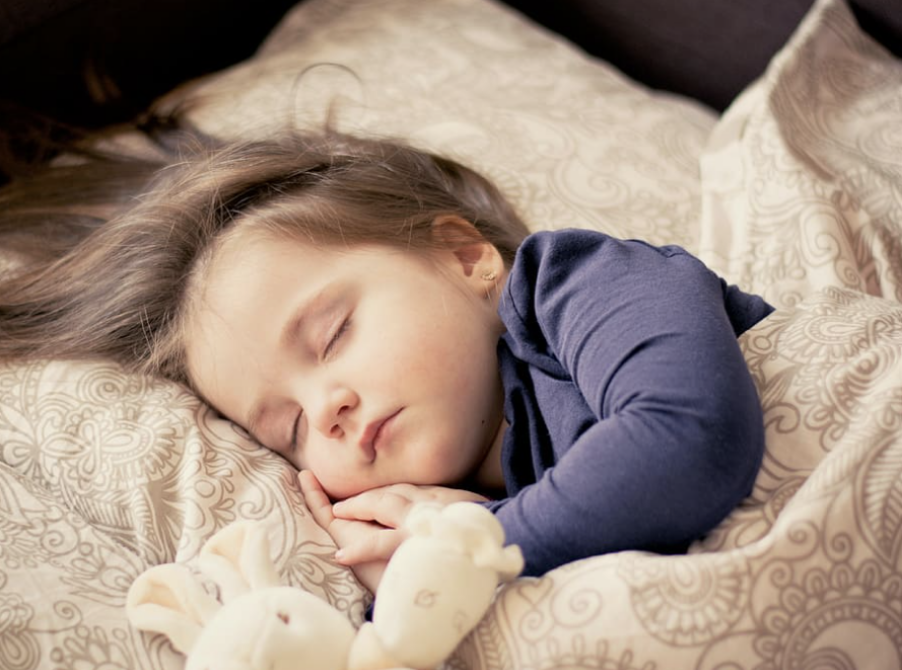

Sleep is a crucial aspect of everyone's life. If a person wants to be in a functional state, they should have a sound sleep of designated hours in 24 hours. Sleep is also essential for your body's restoration and rejuvenation functions. Your child's sleep is essential for their growth, development, and overall well-being.
Unfortunately, for some children, sleep can be disrupted by a condition known as pediatric sleep apnea. It is a serious sleep disorder that can have significant consequences for a child's health and quality of life. After all, a child suffering from sleep disorder means they are not getting enough sleep, which is necessary for proper growth.
In this blog, we will explore what parents should know about pediatric sleep apnea, including its causes, symptoms, potential complications, and available treatment options. So, if your child or a child you know is suffering from this kind of sleep disorder, then make sure to read it till the end.
Pediatric sleep apnea is characterized by partial or complete pauses in breathing during sleep. These pauses, known as apneas, can occur due to several reasons. The primary reason could be the relaxation of the muscles at the back of the throat, leading to a blocked airway. Pause in breathing caused by the narrowing or blocked airways is known as obstructive sleep apnea.
There are two main types of pediatric sleep apnea: obstructive sleep apnea (OSA) and central sleep apnea. Central sleep apnea symptoms are related to the inability of one's brain to send signals to breathing muscles, which causes a pause in breathing during sleep. Central sleep apnea in kids is a more serious problem, as sleep apnea episodes can halt the growth of the brain. The causes of these two kinds of sleep apnea in kids are:
This is the most common type of sleep apnea in children. It occurs when the muscles in the throat temporarily collapse, blocking the airflow. It's treatable if caught early. OSA can lead to disrupted sleep and decreased oxygen levels in the blood. These health conditions can further add to other diseases, so it's important to get your child treated by a sleep specialist or throat specialist.
This type of sleep apnea is less common and is caused by a failure of the brain to send the appropriate signals to the muscles responsible for breathing. It could be a serious condition if detected in kids as it involves the dysfunctionality of the brain. Unlike OSA, there is no physical obstruction of the airway in central sleep apnea.
Several factors can contribute to the development of pediatric sleep apnea. It's important to find the root cause in order to treat the disorder effectively. Some of the commonly found causes in kids are:
Enlarged tonsils and adenoids are a common cause of sleep apnea in children. Enlarged tonsil and adenoid tissues can easily block the airway. These tissues can obstruct the airway during sleep, leading to breathing difficulties.
Excess weight can lead to thick skin around the neck. This can increase the risk of sleep apnea in children, as it can contribute to the narrowing of the airway.
This disorder could be transferred genetically. Therefore, family history plays a role, as children with parents who have sleep apnea are more likely to develop the condition themselves.
Medical conditions that can have an impact on the brain or airways of a child can cause this sleep disorder. Conditions such as down syndrome and craniofacial abnormalities can increase the risk of sleep apnea.
Identifying pediatric sleep apnea can be challenging, as the symptoms may be subtle or mistaken for other issues. Also, sometimes, children are not quite vocal about the issues they are facing or fail to communicate. That's why parents should be more observant towards the medical symptoms. Some common symptoms include:
Loud Snoring: Although snoring could be a common thing, loud and persistent snoring can be a sign of sleep apnea.
Pauses in Breathing: If you notice that your kid pauses their breathing while sleeping, then it means they might have sleep apnea.
Restless Sleep: Children with sleep apnea find it hard to sleep, and parents can notice their children twisting and turning in sleep.
Daytime Sleepiness: Sleep apnea causes disruption in sleep, which can lead to excessive daytime sleepiness, which may affect a child's performance in school.
Behavioral Issues: Lack of sleep can cause behavioral issues in children. You can notice behavioral issues like irritability and difficulty concentrating.
Pediatric sleep apnea can have serious medical consequences if left undetected and untreated. It can affect cognitive function in a child and other important factors such as growth & development. Moreover, if sleep apnea is left untreated, it can result in an increase in the risk of high blood pressure, heart problems, and metabolic issues.
If parents suspect their child has sleep apnea, it's crucial to seek medical assistance. After medical assessment, a pediatrician may refer the child to a sleep specialist for further assessment. The diagnosis of sleep apnea often involves a sleep study (polysomnography), during which the child's breathing, brain activity, and other vital signs are monitored while they sleep.
Fortunately, pediatric sleep apnea is treatable if caught early. Also, early intervention is key to preventing complications. Some of the common treatment options for children include:
If enlarged tonsils and adenoids are causing sleep apnea, the only way to treat it is through surgical procedures. The sleep specialist might recommend surgical removal of the enlarged tissues.
To deliver adequate and uninterrupted air pressure to the airway, CPAP machines are used. In some cases, children may use a CPAP machine that delivers a steady stream of air to keep the airway open during sleep.
If the cause is overweight, then your child will have to follow a weight management plan formulated by specialists, specifically to target sleep apnea.
Sleep apnea could be the issue of a particular position of sleeping as well. Thus, some children may only experience apnea in certain sleep positions. Adjusting sleep positions may help reduce symptoms.
Creating a consistent bedtime routine and ensuring a comfortable sleep environment can contribute to better sleep quality. Parents can also introduce appliances such as air purifiers in their children's bedrooms to avoid allergic causes of sleep apnea.
If the sleep apnea issue is purely structural, then there is no need for surgery or a treatment plan. Orthodontic treatments may be considered in cases of structural issues contributing to sleep apnea.
Parents need to be observant and highly careful with their children if they suspect disorders like sleep apnea. Recognizing the symptoms, seeking timely diagnosis, and exploring appropriate treatment options are essential steps in ensuring a child's healthy development and well-being. Early diagnosis can help your child to have a better life. So, immediately seek medical attention if you suspect anything like it.
Leave a comment